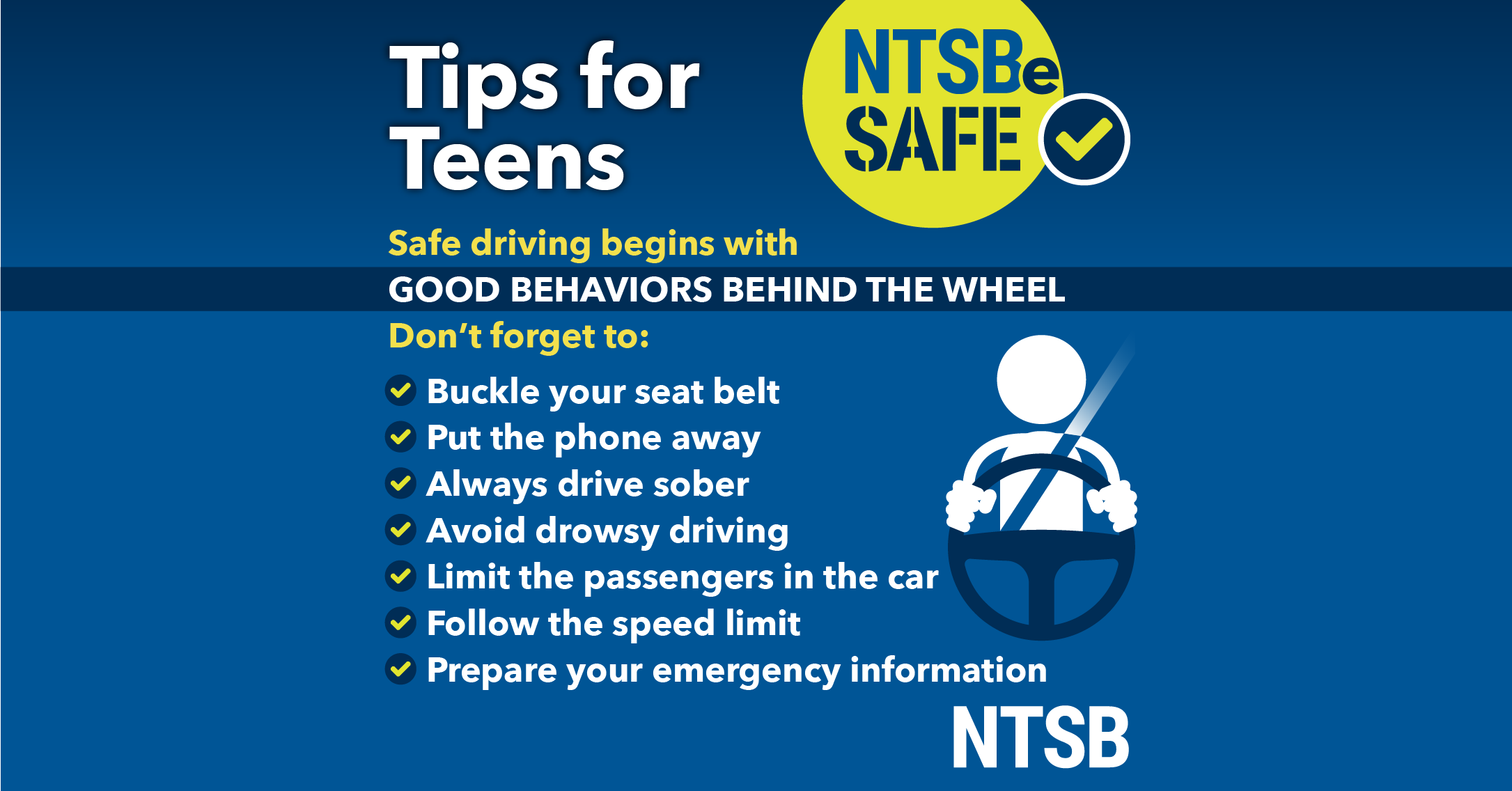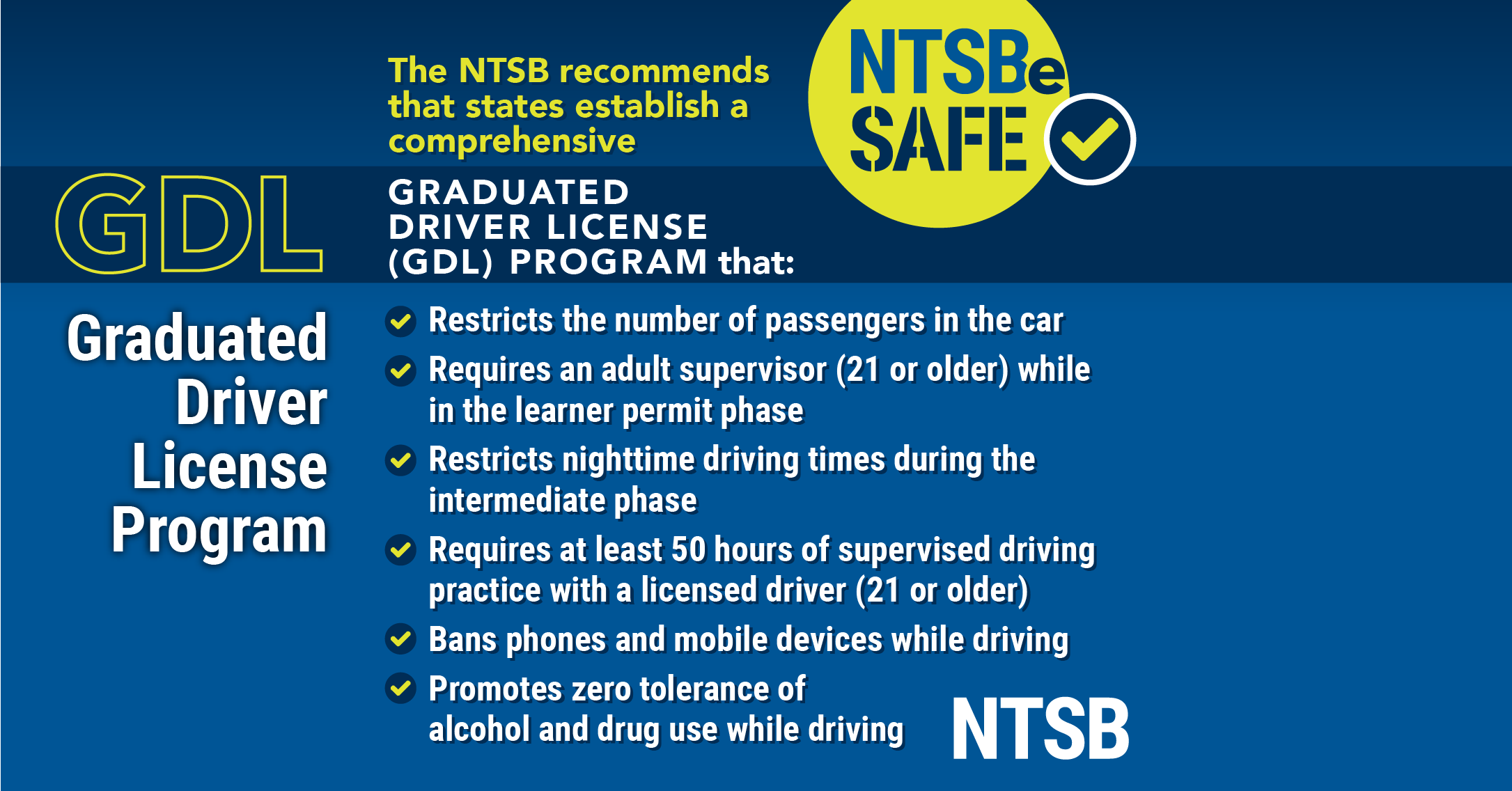
Motor vehicle crashes are a leading cause of death for teens. Teen drivers have a disproportionately high rate of fatal crashes, mainly because of their lack of skills and experience.
In 2022, approximately
2,800 teens in the United States aged 13–19 were killed in motor vehicle crashes. This means that approximately 7 teens died every day due to motor vehicle crashes.
What tends to be their riskiest behaviors? Speeding, distracted and drowsy driving, and not buckling up. Teens are far more prone to make mistakes than experienced drivers, however there are strategies for improving the safety of novice drivers through policy changes and raising awareness of safe driving behaviors.
Safe Driving Behaviors (Best Practices) for Teens

1. Avoid Distracted Driving
Teens can be distracted by texting, talking on the phone, and having too many passengers in the car. According to research from NHTSA, dialing a phone while driving increases a teen's risk of crashing by six times. Texting while driving increases the risk by 23 times. According to a study by the AAA Foundation for Traffic Safety, between 2007 and 2015, an average of 59% of crashes contained some type of potentially distracting behavior during the six seconds leading up to a crash. The most frequent potentially-distracting behaviors were conversation and interaction with passengers and cell phone use.
2. Do not Use Alcohol or Other Drugs
Consuming alcohol or other impairing drugs is illegal for teens, and driving under the influence of any impairing substance, such as illicit, over-the-counter, and prescription drugs, could have deadly consequences. Teens are more likely than anyone else to be killed in an alcohol-related crash. According to the National Highway Traffic Safety Administration (NHTSA), in 2022, 30% of young drivers, age 15 to 20 years old, who were killed in crashes had BACs of .01 g/dL or higher.
According to
several studies by the National Institutes on Drug Abuse (NIDA), drivers with THC in their blood were roughly twice as likely to be responsible for a deadly crash or be killed than drivers who hadn't used drugs or alcohol. The impairing effects of marijuana can seem subtle, but actually have significant impairing effect. Remember marijuana use impairs motor coordination, judgment, and reaction time. Driving high is just as dangerous as driving drunk. The repercussions are the same. You can get a DUI and you are at risk of being involved in a crash.
To Parents of teen drivers: Be a positive role model and educate your children on the risks of marijuana-impaired driving. Remind your teen that driving while impaired is illegal. Some states have a zero-tolerance policy not just for impairment, but for any recent marijuana use before driving. Read the
Safety Alert to learn more.
3. Avoid Speeding
Follow the posted speed limits. According to NHTSA, in 2022, speed was a factor in 30% of fatal crashes that involved passenger vehicle teen drivers (15-18 years old). A study by the Governors Highway Safety Association (GHSA) also found that from 2000-2011, teens were involved in 19,447 speeding-related crashes.
4. Get Enough Sleep Before Driving
Drowsy driving is a common risk for teen drivers. Teens need 8 to 10 hours of sleep for optimal health and safety. According to NHTSA, drivers age 17-23 years old are at a higher risk for a crash caused by drowsy driving. In 2022, 20% of teen fatal crashes occurred between 9 pm and 12 am, and 51% occurred on Friday, Saturday, or Sunday.
If you feel tired while driving, stop the car and take a nap or switch drivers. Choose a safe location to rest.
5. Buckle Up
It seems like an obvious recommendation these days when seat belt laws are required for drivers in all states (except New Hampshire); however, this is not always done—and teens are needlessly dying or getting injured. A matter of fact, teen drivers have the lowest seat belt use rate. According to NHTSA, in 2022, 50% of teen drivers who died in crashes were unbuckled. Additionally, passengers in the back should be encouraged to wear their seat belts. When the teen driver involved in a fatal crash was unbuckled, nine out of 10 of the passengers who died were also unbuckled. Teen drivers must set a positive example by wearing their seat belt every drive, every time, and encourage their peers to do the same.
Watch the State of Teen Driver Safety Roundtable Discussion
Graduated Driver License (GDL) Laws

GDL laws allow teen drivers to gain driving experience safely in an environment that limits the potential for risk. The NTSB continues to call for states to improve their GDL programs by directly addressing the following provisions. States should add passenger restrictions, nighttime driving restrictions, cell phone restrictions, and provisions addressing minimum driving practice and minimum holding periods.
The NTSB advocates a 3-phase Graduated Driver License (GDL) Law with the following provisions:
Phase 1: Learner’s permit
- 6-month minimum holding period (without an at-fault driver or traffic violation)
- Supervised driver requirement with supervising driver age 21 or older
- Seat belts used by all occupants in all seating positions
- Driving with a measurable blood alcohol level prohibited
- Cell phone use prohibited while driving
Phase 2: Intermediate (provisional) license
- 6-month minimum holding period (without an at-fault crash or traffic violation)
- Nighttime driving restriction
- Teen passenger restriction (zero or 1 passenger)
- Seat belts used by all occupants in all seating positions
- Driving with a measurable blood alcohol level prohibited
- Cell phone use prohibited while driving
Phase 3: Full licensure
- Seat belts used by all occupants in all seating positions
- Driving with a measurable blood alcohol level by all drivers under age 21 prohibited
- Cell phone use prohibited while driving
Watch the State of Graduated Driver License (GDL) Laws Roundtable Discussion
Collision Avoidance Technology and Teen Driver Safety
Recent research studies suggest collision-avoidance features and teen-specific vehicle technologies have the potential to prevent or mitigate up to 75% of fatal crashes involving teen drivers. Require Collision-Avoidance and Connected-Vehicle Technologies on all Vehicles is on the current 2021-2023 Most Wanted List and Teen Driving Safety has been a topic on previous Most Wanted List of Transportation Improvements. NTSB hosted a webinar on collision-avoidance technology and teen driver safety to discuss the role of vehicle technology—specifically, collision avoidance technologies (such as AEB and collision warning)—in reducing teen traffic crashes and fatalities.
Watch the NTSB Webinar:
Top of page